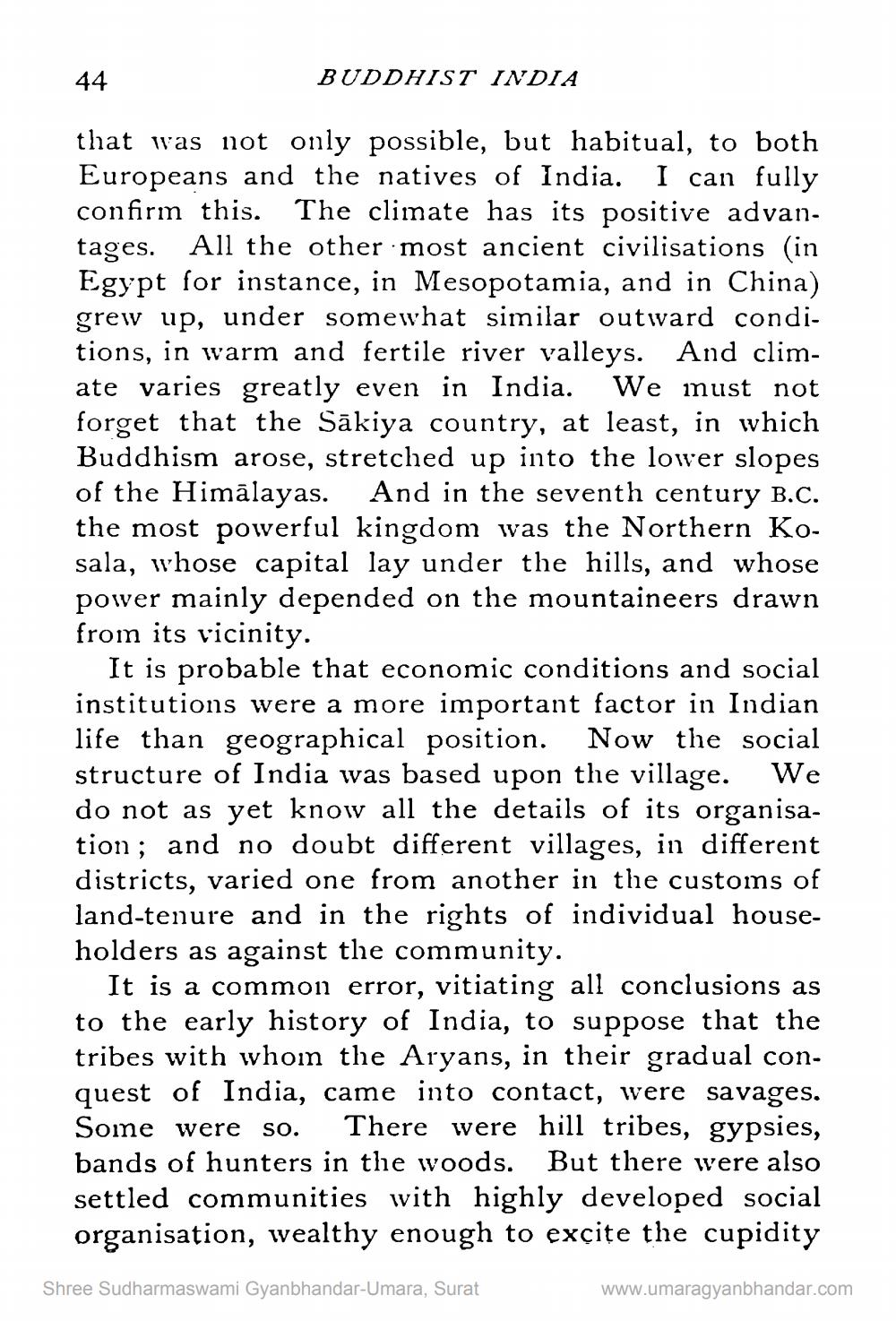________________
44
BUDDHIST INDIA
that was not only possible, but habitual, to both Europeans and the natives of India. I can fully confirm this. The climate has its positive advan. tages. All the other most ancient civilisations (in Egypt for instance, in Mesopotamia, and in China) grew up, under somewhat similar outward conditions, in warm and fertile river valleys. And climate varies greatly even in India. We inust not forget that the Sākiya country, at least, in which Buddhism arose, stretched up into the lower slopes of the Himālayas. And in the seventh century B.C. the most powerful kingdom was the Northern Kosala, whose capital lay under the hills, and whose power mainly depended on the mountaineers drawn from its vicinity.
It is probable that economic conditions and social institutions were a more important factor in Indian life than geographical position. Now the social structure of India was based upon the village. We do not as yet know all the details of its organisation; and no doubt different villages, in different districts, varied one from another in the customs of land-tenure and in the rights of individual householders as against the community.
It is a common error, vitiating all conclusions as to the early history of India, to suppose that the tribes with whom the Aryans, in their gradual conquest of India, came into contact, were savages. Some were so. There were hill tribes, gypsies, bands of hunters in the woods. But there were also settled communities with highly developed social organisation, wealthy enough to excite the cupidity
Shree Sudharmaswami Gyanbhandar-Umara, Surat
www.umaragyanbhandar.com




